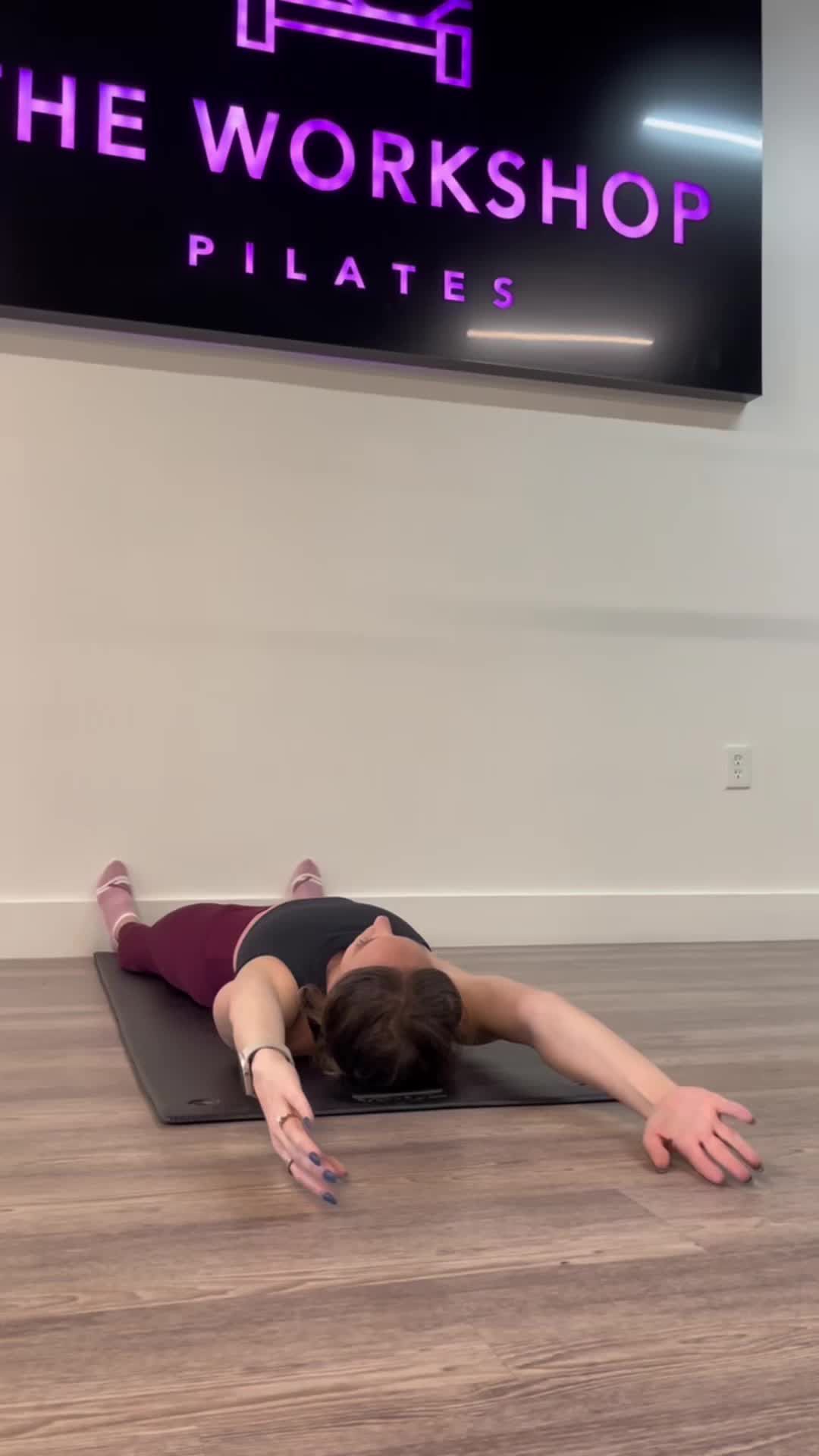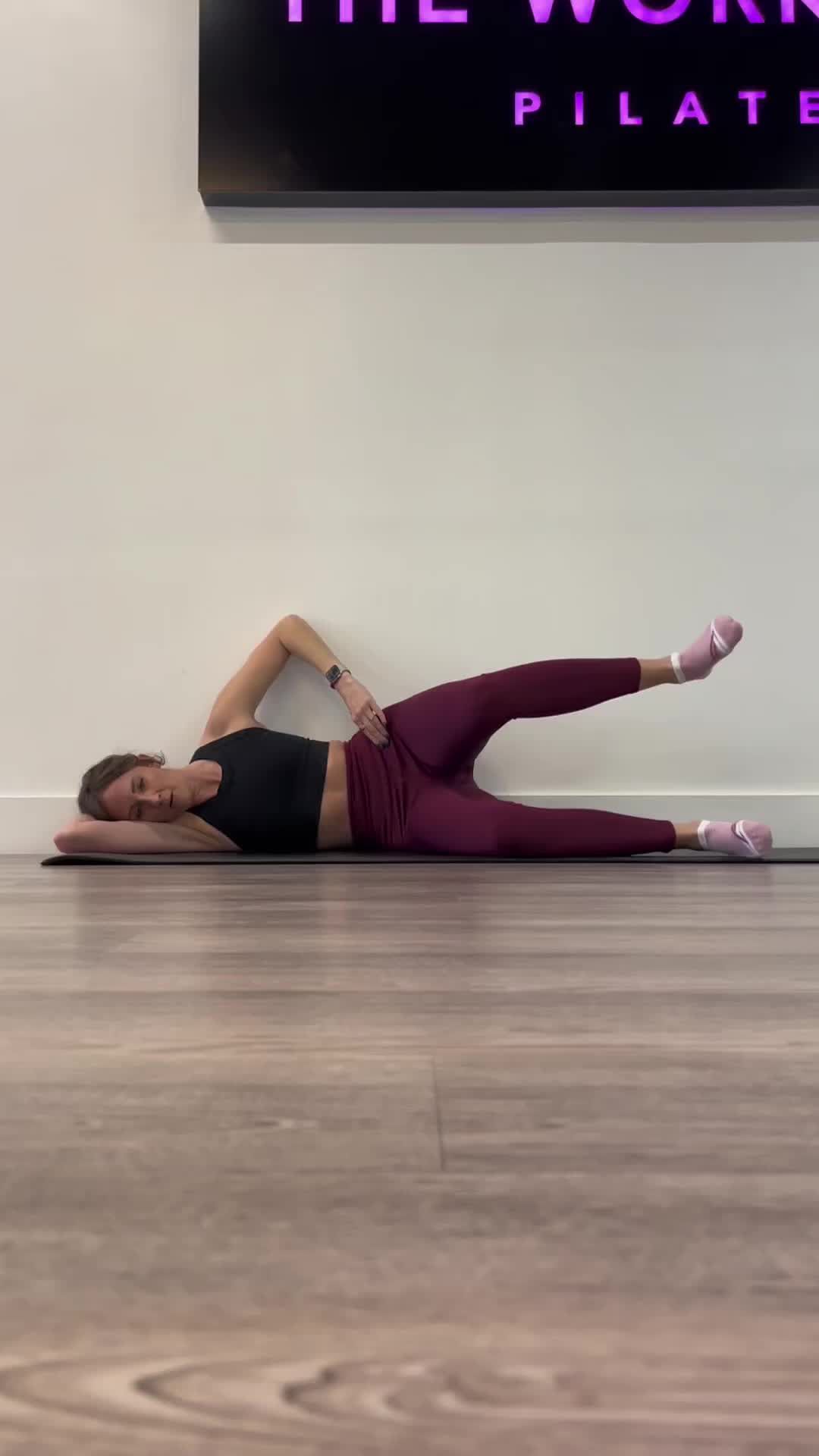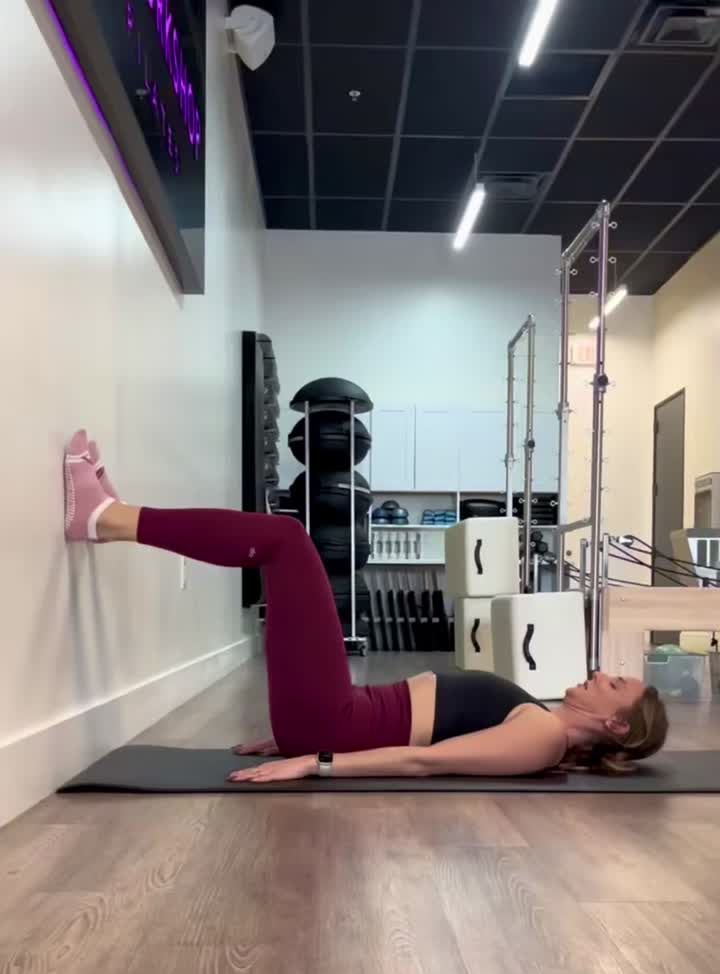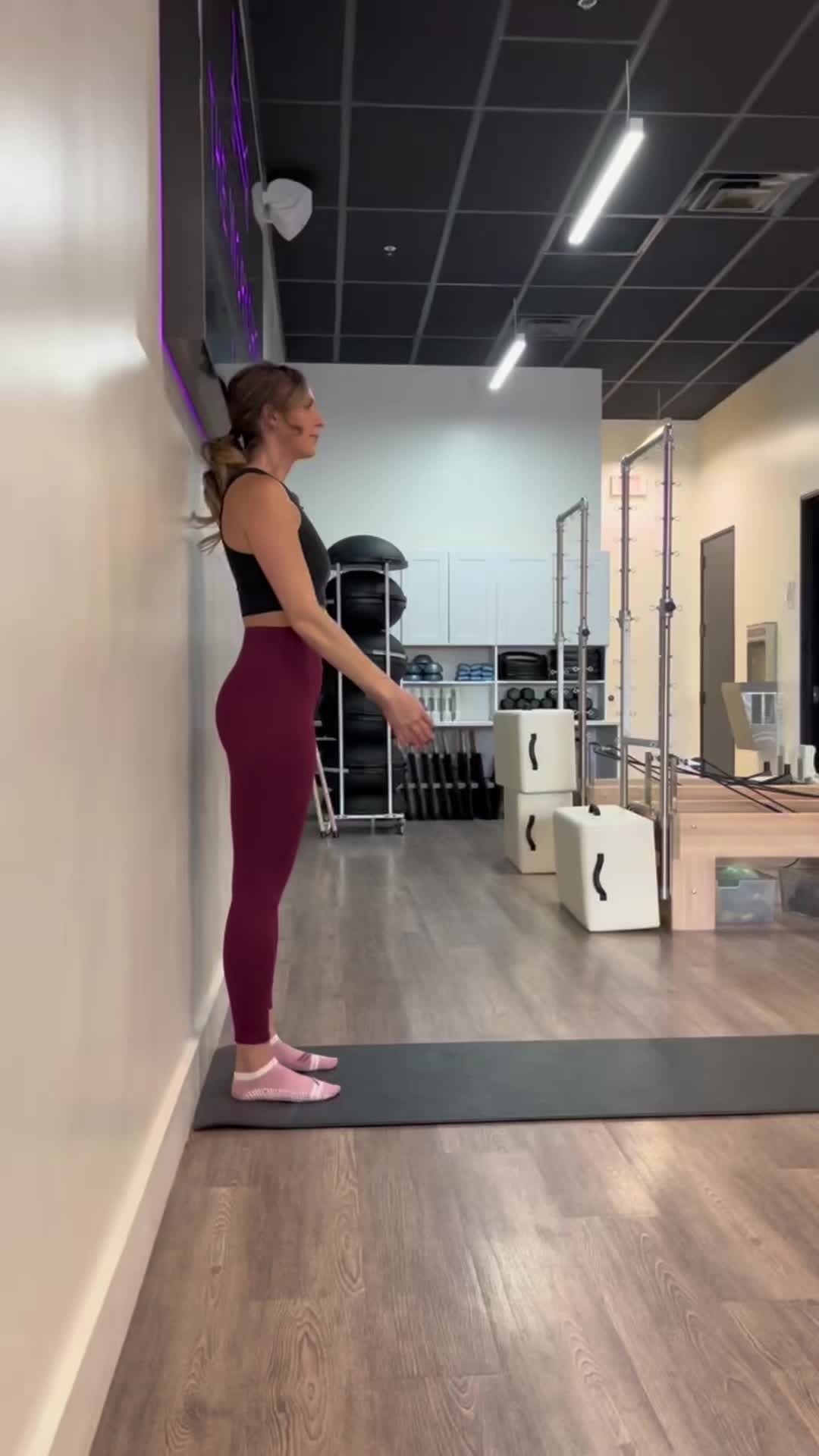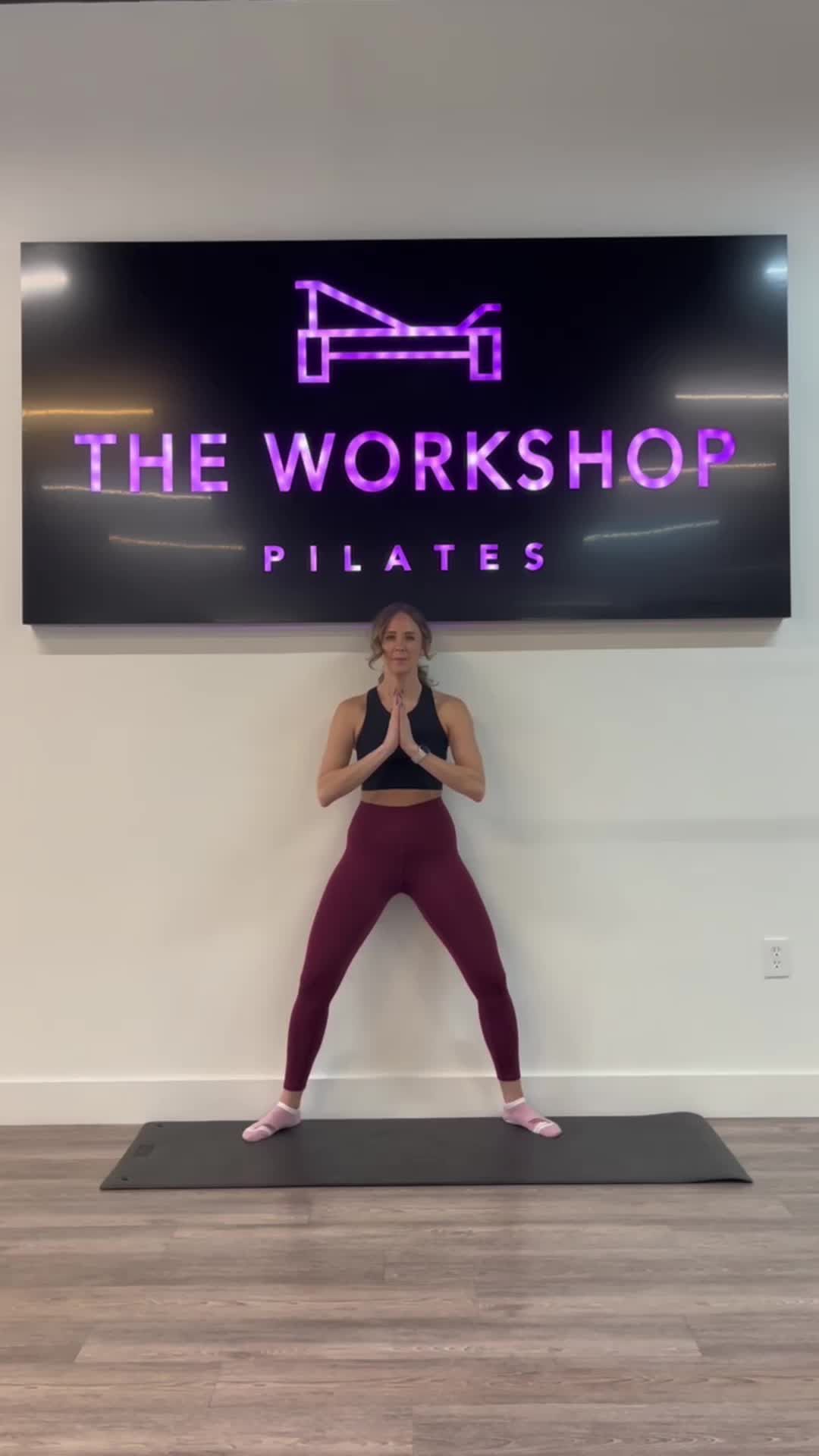Despite being a low-impact training modality that’s been around for years, Pilates seems to be hotter than ever. If you’re new to the method, you might just fall in love with this beginner-friendly twist on the traditional approach: wall pilates.
Pilates is an exercise method created by Joseph Pilates in the early 20th century, says Ariel Schwartz, certified Pilates instructor and co-founder of The Workshop Pilates. Pilates focuses on strengthening the core muscles, including the abs and back, as well as improving stability, posture, balance and flexibility, she explains.
More specifically, wall Pilates are traditional Pilates exercises performed against a wall for extra support, stability or resistance, says Schwartz. Wall Pilates moves are based on moves you would see both in the class repertoire created by Joseph Pilates and those you might typically see taught in a group mat or reformer Pilates class.
Keep scrolling to learn more about Wall Pilates, including the benefits and five moves you can do at home.
Meet the expert: Ariel Schwartz is a certified Pilates instructor and co-founder of The Workshop Pilates.
What is Wall Pilates?
Wall Pilates consists of performing traditional Pilates exercises with the support of a wall, reiterates Schwartz. The idea is for the wall to provide additional support, stability and strength, he explains.
There isn’t necessarily a standardized set of exercises that are considered wall Pilates, but the method is an adaptation of mat and reformer Pilates exercises that are performed with a body part pressed against the wall, Schwartz says. Typical wall Pilates exercises include glute bridges, abdominal curls, side hip and glute work, and planks.
Low-impact training is also great for *all* levels, as it can be a full-body burn or target a specific muscle group, such as your core, glutes, or hamstrings, he adds.
5 wall pilates exercises to try at home
Instructions: Complete the following exercises as a circuit three times.
To develop
How:
- Start lying on your back, legs hip-width apart, feet flexed against the wall, arms reaching overhead.
- Inhale to brace yourself, then exhale and raise your arms in line with your ears, gesturing from your chin to your chest as you begin to lift your spine off the floor.
- Continue to roll forward, stretch your arms toward your toes, and bring your spine back into a tall, seated position. Keep your feet actively pressing into the wall to provide lower body stability as you engage your abdominal muscles.
- Inhale through the top, then exhale as you move through the lower belly creating a rounded C-curve shape of the spine, rolling down vertebra to vertebra.
- When your shoulder blades meet the floor, extend your arms back overhead. That’s 1 rep. Do 8 repetitions.
Side hydrant
How:
- Begin lying on your side with your back against a wall, lower arm bent under your head, knees bent and resting in front of your body. Keep your top knee bent at 90 degrees.
- Inhale to brace yourself, then exhale as you lift your top knee toward the ceiling.
- Stay active through the lower side waist as you try to lift your lower ribs off the floor. The wall should provide tactile feedback to ensure the hips stay stacked throughout the movement.
- Inhale and slowly lower your back to the starting position. That’s 1 rep. Do 10 repetitions on each side.
Professional advice: If you’re ready to level up, Schwartz suggests pulsing your knee toward the ceiling at the top of the movement, drawing circles with your knee, or keeping your heels connected for a clam shape.
Bridge of glutes
How:
- Begin lying on your back shin-length away from a wall, knees bent, feet pressing into the wall at knee height, arms long at your sides.
- Inhale to brace, engage your hamstrings, glutes and core, and exhale to lift your hips into a bridge position.
- Inhale through the top and then exhale to slowly lower your back to the starting position. That’s 1 rep. Do 10 repetitions.
Professional advice: Looking for something spicier? Schwartz recommends adding a march when lifting your hips (alternately pulling one knee toward your chest at a time), doing the bridge with one foot on the wall and one leg extended toward the ceiling, or pushing your hips up and down on the top. of the bridge
Roll down to flex
How:
- Start in a standing position with your back against the wall, arms long by your sides.
- Inhale to wrap your arms up and over your head, then exhale as you slowly roll down, palms reaching the floor. The wall provides feedback as you articulate your spine to roll down.
- Inhale and walk your hands into a plank position, then bend your elbows to lower your chest to the floor for a push-up.
- Exhale as you push back into plank position, then bring your hands up to your feet as your hips lift toward the ceiling.
- Inhale as you hold the stretch, then exhale to engage your core and come back up to a standing position. That’s 1 rep. Do 8 repetitions.
Professional advice: Add extra push-ups between each rep if you’re looking for an extra burn.
Squat
How:
- Start in a standing position with your back against a wall, legs slightly wider than hip-width apart, toes slightly turned out.
- Inhale as you bend your knees and lower into a squat position, keeping your chest lifted as if you were sliding down the wall.
- Engage your inner thighs, glutes and lower abs, then exhale to straighten your legs and return to a standing position. That’s 1 rep. Do 10 repetitions.
Professional advice: To increase the difficulty, add a pulse or heel raises while at the bottom of the squat.
Benefits of Wall Pilates
- Suitable for beginners. If you’re new to Pilates, Wall Pilates is great for beginners because it only requires a wall, says Schwartz. The wall offers extra stability (like holding on), can help with form and alignment (like leaning against the wall on your side), or resistance (getting a wall bridge), she explains. Once you’re comfortable with the fundamental exercises, you can level up by adding additional challenges like hand or ankle weights, a Pilates ball or a resistance band, she says.
- accessible Not only is wall Pilates free, but it requires no additional equipment, says Schwartz. It’s also a great workout when you’re traveling, short on time, or in the mood for a quick burn.
- Decreases stress. Any movement can be beneficial for your mental health, but Pilates can be especially helpful for managing stress, says Schwartz. This may be in part thanks to the focus on breathing and the emphasis on the mind-body connection.
- Increases body awareness. Using a wall can help you understand where your body is in relation to space, says Schwartz. This is especially helpful for focusing on proper alignment when you don’t have a Pilates instructor teaching you your routine and follow-through form, she explains.
- Provides a full body workout. Wall Pilates can be designed to target different muscle groups, including the abs, glutes, hamstrings and arms for a full-body workout, says Schwartz. Many movements are also compound exercises that work several muscle groups at the same time.
Will I see results with Wall Pilates?
Wall Pilates is great if you can’t get to your local Pilates studio and/or you’re looking for a quick burn, but it doesn’t necessarily match the benefits of reformer Pilates or resistance training, says Schwartz.
If your goal is to maintain strength, Wall Pilates is a great workout. However, if you want to lose weight or gain muscle, you need to add a weighted aspect to your regimen like using a reformer or lifting weights, he explains. Combining wall Pilates with other mat Pilates exercises and adding extra resistance with weights or resistance bands will create a more dynamic, challenging and effective workout, he adds.
That said, one TikToker felt a burning core and booty after 10 minutes of wall Pilates, while another user noticed more abdominal definition after 10 days.
Just remember, like any fitness regimen, consistency is key to seeing Wall Pilates results, says Schwartz. Your suggestion? Opt for a longer 45-minute full-body workout three to four times a week, or break up your workout with shorter 15- to 20-minute workouts that target a specific muscle group five to six times a week to get maximum results. . However, because Wall Pilates is low-impact, you can fully incorporate it into your daily routine if you like, he adds.

Andi Breitowich is a writer and graduate student based in Chicago at Northwestern Medill. She is a massive consumer of social media and cares about women’s rights, holistic wellness and non-stigmatizing reproductive care. A former collegiate pole vaulter, she loves all things fitness and is currently obsessed with Peloton Tread workouts and hot yoga.
#home #wall #pilates #workout #perfect #beginners
Image Source : www.womenshealthmag.com
